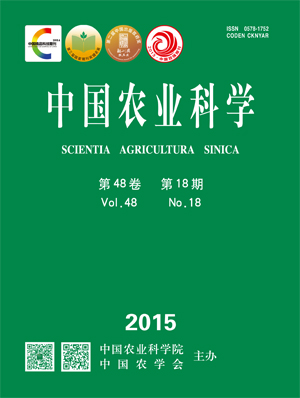-
Evaluation of the Effect of Co-Inoculant of Paenibacillus mucilaginosus and Bradyrhizobium japonicum in Application
- MA Ming-chao, LIU Li, JIANG Xin, GUAN Da-wei, LI Jun
-
Scientia Agricultura Sinica. 2015, 48(18):
3600-3611.
doi:10.3864/j.issn.0578-1752.2015.18.004
-
 Abstract
(
555 )
Abstract
(
555 )
 HTML
(
9 )
HTML
(
9 )
 PDF (488KB)
(
974
)
PDF (488KB)
(
974
)
 Save
Save
-
References |
Related Articles |
Metrics
【Objective】Paenibacillus mucilaginosus and Bradyrhizobium japonicum are widely used as microbial fertilizers in agricultural application due to their beneficial properties, such as phosphorus-solubilization, potassium-release, growth-promotion, and symbiotic nitrogen fixation, respectively. They have all attracted considerable attention of researchers on their application effects and mechanisms when they were used as a single inoculation. The aim of this paper is to evaluate the effects of both species on soybean and reveal the mechanisms in order to provide certain theoretical supports for new multiple species inoculants of microbial fertilizers. 【Method】A field experiment with five different fertilizing measures was carried out in Taian, Shandong Province, including T1 (the control), T2 (inoculant of P. mucilaginosus 3016), T3 (inoculant of B. japonicum 5136), T4 (co-inoculant of P. mucilaginosus 3016 and B. japonicum 5136) and T5 (the regular fertilizer dose). Four replicates for each treatment were designed. The effects on soybean growth, soil fertility and soil microbiological characteristics were analyzed.【Result】The results showed that inoculant of P. mucilaginosus 3016 and/or B. japonicum 5136 could improve seeds weight per plant, crop yield and harvest index, and T4 treatment was the highest and better than T1 with a rate of 12.8%, 9.3% and 41.0%, respectively. Co-inoculant could keep the N, P, K content in seeds, stems and leaves of soybean with the highest level, especially K of seeds, N and P of stems and leaves, which were increased by 5.7%, 9.3% and 38.5%, respectively. Co-inoculant could increase the soybean yield and quality. In terms of soil fertility, bio-fertilizer and chemical fertilizer could improve the content of total N, available P, available K and organic matter in soil to some extent, and bio-fertilizer was better at persistence and less effect on soil pH. In this field experiment, the soil fertility in T4 treatment was the best, with an increase rate of 6.5%, 43.7%, 8.5% and 15.5% for total N, available P, available K and organic matter than that in T1 treatment. Co-inoculant could improve soil fertility. Meanwhile, co-inoculation could change soil from “fungus type” to “bacteria type”, by increasing the quantity of bacteria and actinomycete, and inhibiting fungi, which lead to a healthy soil structure. The results of Canonical Correlation Analysis (CCA) showed that pH and available K played a key role in the shifts of microbial community.【Conclusion】Co-inoculant of P. mucilaginosus 3016 and B. japonicum 5136 not only increased the soybean quality and crop yield, but also improved soil microbiome and soil fertility. That may be an optimal fertilizing measure with good application prospects and popularized value.









